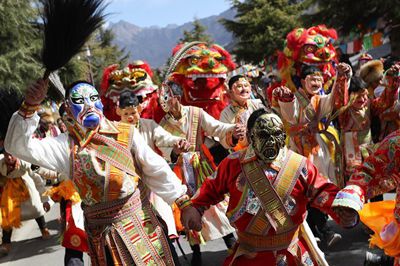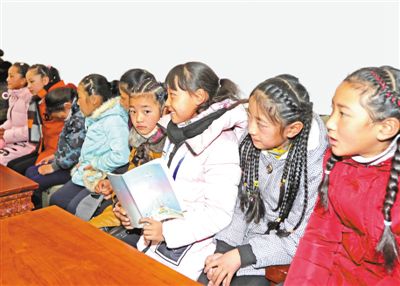atic Management Committee of the Tashilhunpo Monastery, presented Hada to Living Buddha Bumi and invited him to walk onto the wooden platform to perform tonsure for the soul boy of the 10th Panchen Lama. Standing up, Gyantsen Norpo presented Hada to Living Buddha Bumi, and then knelt down to kowtow to him. Living Buddha Bumi shaved the boy's head while chanting sutras, and then gave him a religious name Jigtson Losang Jampa Lhundop Chosgyi Gyalpo Palsangpo. Then Bumi grabbed a handful of highland barley from the sacrificial vessel and mixed with the hair cut off from the soul boy's head, and then sprinkled it around. Chapter Two Official approval of the 11th Panchen Erdeni by the State Council I. The Earliest reincarnation system for living Buddha originated from the Black Hat Lama In the summer four years ago, I drove to the Tsurphu Monastery about 90 km southwest of Lhasa to cover the confirmation ceremony of the 16th Living Buddha Karmapa. This is the first living Buddha of the Tibetan Buddhism officially approved by the Central Government of the People's Republic of China after Tibet's peaceful liberation. The Tibetan Buddhism with a long history has developed into four major sects: the Gelug, Kagyu, Nyingma, and Sakya. In general terms, the Gelug is referred to as "the Yellow Sect" because its followers wear yellow hats; the Kagyu is named "the White Sect" as its lamas are dressed in white; the Nyingma is known as the "Red Sect" because its monks wear red hats; and the Sakya "is called Color Sect" for colors of red, white and black symbolizing the Manjusri, Avalokitesvara and Vajra Buddha respectively are painted on the external walls of their monasteries. In Tibet's history, several religious schools assumed political and religious authority. In the mid-13th century, the founder of the Yuan Dynasty Kublai Khan invited a prominent figure in Tibet, the fifth leader of the Sakya Sect Dongon Choegyal Phakpa to Dadu (the present-day Beijing) and appointed him as his Imperial Preceptor. Then the Mongol Empire didn't have its own written language, thus the intelligent Phakpa personally created a Mongolian writing system and presented it to Kublai Khan. Appreciating Phakpa's talent and ability very much, the Khan bestowed him the title of Karmapa the Great Jewel Dharma Lord. He also divided Tibet into 13 fiefs (a fief equals 10,000 households) and granted them to Phakpa for governing. Henceforward Dongon Choegyal Phakpa founded the Sakya Dynasty in Tibet, and ran religious and political affairs in the capacity of both Karmapa and King of Tibet, thus starting the integration of religion and politics in Tibet. Sharing the Mongolian writing system invented by Phaka and the Tibetan Buddhism, the nomadic Tibetan and Mongolian people had much in common in terms of lifestyle and culture. In the middle of the14th century, |
- Home
- News |Tibet |Exclusive |China |World |Other Tibetan-Inhabited Area |Tibet through the Eyes of Foreigners |Related News
- Documents |White Papers |Others
- Photo |Politics |Economy & Society |Culture & Religion |Human & Nature |Beautiful Tibet |Other Tibetan-Inhabited Area |Exchanges |Related
- Video |News |Documentary |Micro-Video |Entertainment
- Art
- Tourism
- In Focus
- About Tibet






